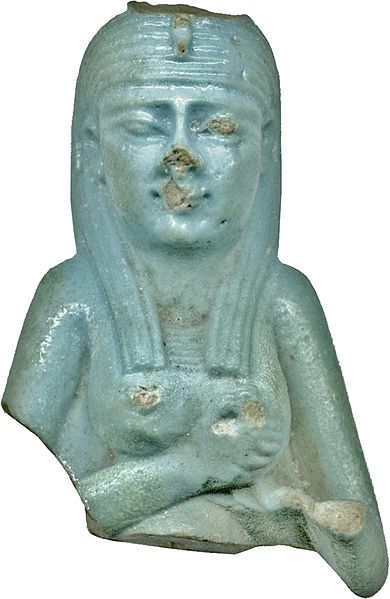Does placing an object in a museum make it less sacred?
Have you ever gone into a museum and seen someone bow down to a statue of Isis, or begin the mummification process supervised by a statue of Anubis (god of mummification and the afterlife). I for one, have not.I don't believe that the object being in a museum makes not represent what it used to - it is still a depiction of a god/goddess, still a ritual mask, etc., yet it is not going to be used the way it once was meant to be.
 |
| Isis Nursing Horus, Walters Art Museum |
Thoughts? Comments?
This comment has been removed by the author.
ReplyDeleteI like what you have to say. I have encountered several sacred objects in the art museum of my home town, and have wondered the same things you have. I actually had no problem when an Egyptian exhibit came through the museum. The reason was that the objects were presented as artifacts, not art. They were to be valued for their historical significance, not aesthetic. But what about objects that come from a religion that is still practiced today? This is the case with some Hindu artifacts that my hometown art museum has. Their being in an art collection has never sat well with me. The Hindu statues are placed in the same room with some very contemporary Indian art. This, to me, emphasizes the aesthetic value of the statues while minimizing the spiritual. Admiring these statues for their aesthetic value is as much an insult to a Hindu as is calling the Bible false, but good literature, for a Christian. It is something of a slap in the face. The room with the Hindu statues connects to a larger collection of "tribal" art, which is itself also stripped of its sacred status. Moreover I think that the pieces, stripped of their sacred status, become something of curios, or even worse “ethnic curios.” How more demeaning could one get? To quote Coomaraswamy "It is luxurious to make mantelpiece ornaments of the artefacts of what we term uncivilized or superstitious peoples, whose culture we think of as much inferior to our own, and which our touch has destroyed."
ReplyDelete